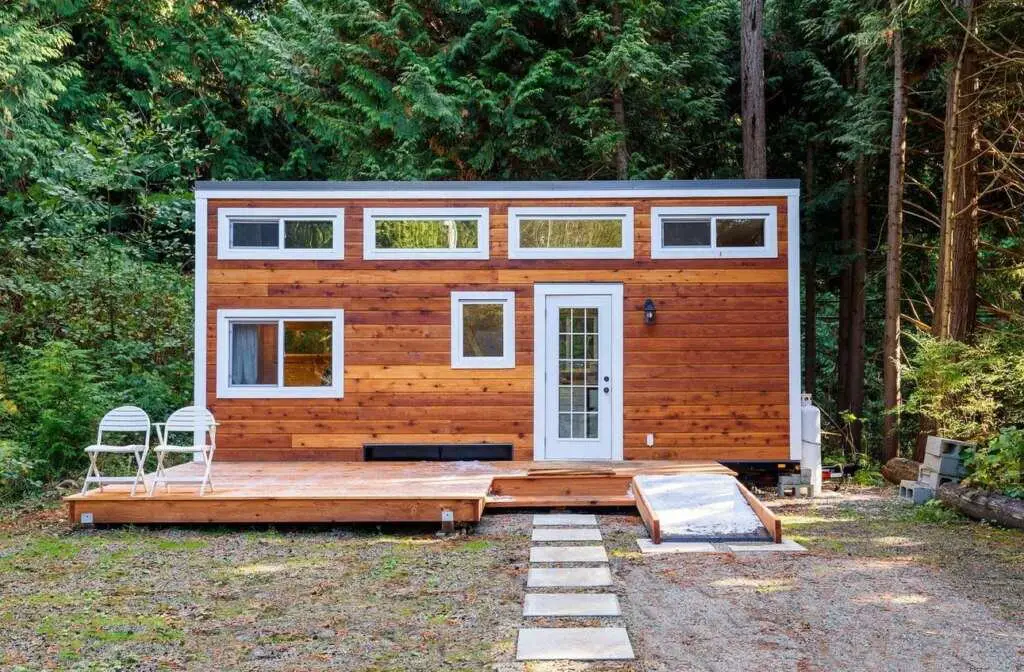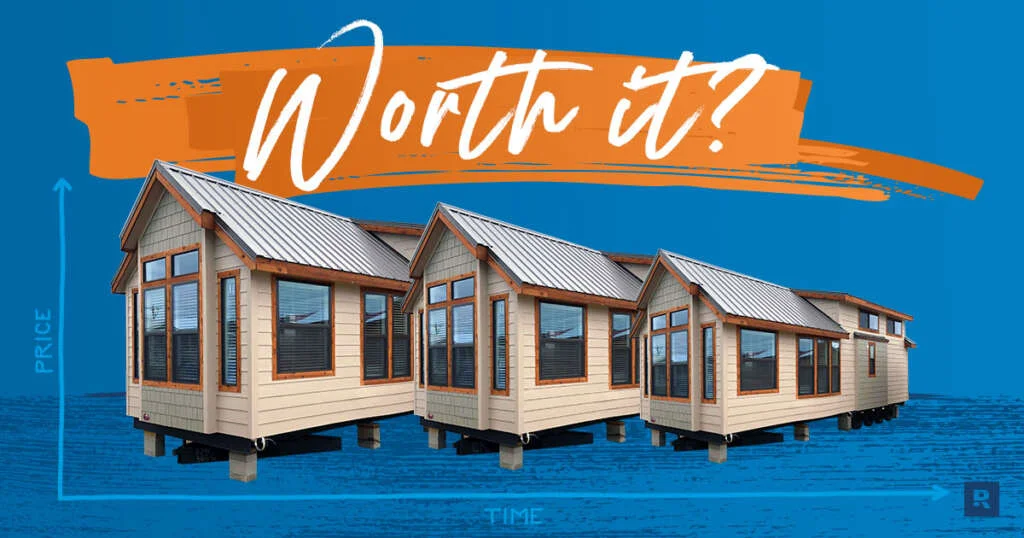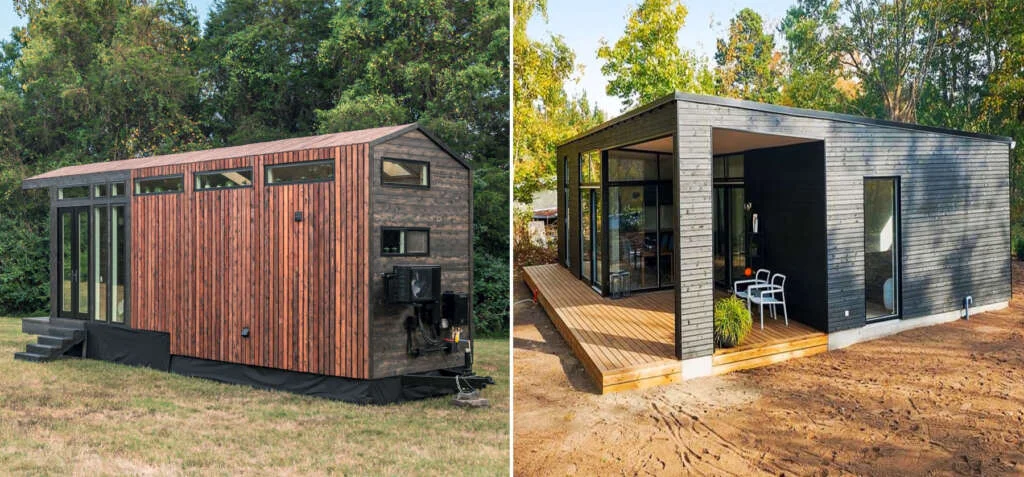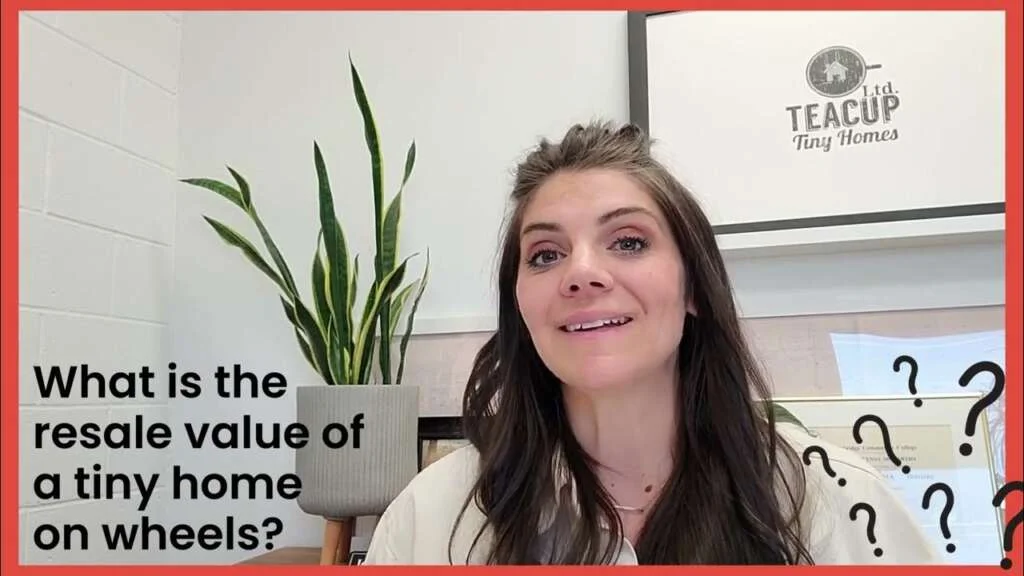Have you ever wondered what the resale value of a tiny home is? Well, in this article, we’ll explore the answer to that very question. With the growing popularity of tiny homes as an alternative housing option, it’s only natural to wonder how these compact dwellings hold up in terms of their value. Whether you’re considering buying or selling a tiny home, understanding its resale value can provide valuable insights into the future prospects of this unique housing trend. So, let’s dive right in and discover what influences the resale value of a tiny home and what you need to know before making any decisions.
Factors Affecting the Resale Value of a Tiny Home
When it comes to buying or selling a tiny home, one of the most important considerations for both buyers and sellers is the resale value. The resale value of a tiny home refers to the amount of money it can fetch on the market when it is sold. Several factors can influence the resale value of a tiny home, and understanding these factors can help you make informed decisions when buying or selling a tiny home.
Location
The location of a tiny home is a significant factor that can affect its resale value. Just like traditional real estate, the location plays a crucial role in determining the desirability and demand for a tiny home. The location can be divided into several aspects that impact the resale value:
Urban vs. Rural Areas
Whether a tiny home is situated in an urban or rural area can have a considerable influence on its resale value. In urban areas, where land is often at a premium, tiny homes may command a higher resale value due to their compact size and potential for efficient use of space. On the other hand, tiny homes in rural areas may have a lower resale value unless they offer unique features or amenities.
Local Regulations and Zoning
Local regulations and zoning ordinances can significantly impact the resale value of a tiny home. Some areas have specific restrictions on where tiny homes can be placed, which can limit their appeal and potential market value. It’s important to research and understand the regulations and zoning requirements in your desired location before buying a tiny home to ensure it can be legally placed and, therefore, maintain its resale value.
Proximity to Amenities
The proximity of a tiny home to amenities such as schools, parks, shopping centers, and public transportation can also affect its resale value. Tiny homes located in convenient and sought-after areas with easy access to amenities may be more attractive to potential buyers, leading to a higher resale value.
Local Real Estate Market
The state of the local real estate market can have a significant impact on the resale value of a tiny home. In a seller’s market where demand exceeds supply, tiny homes may sell for a higher price, increasing their resale value. Conversely, in a buyer’s market with an oversupply of properties, the resale value of a tiny home may be lower.
Condition and Maintenance
The condition and maintenance of a tiny home are crucial factors that can influence its resale value. Buyers are more likely to pay a higher price for a tiny home that is well-maintained and in good overall condition.
Overall Condition
The overall condition of a tiny home, including its exterior and interior, can play a significant role in determining its resale value. A well-maintained and visually appealing tiny home is more likely to attract potential buyers and command a higher price on the market. It’s essential to keep up with routine maintenance tasks, such as repairing any damages, repainting the walls, and ensuring the structure is sound.
Regular Maintenance
Regular maintenance is another factor that can affect the resale value of a tiny home. Properly maintaining all aspects of the home, such as plumbing, electrical systems, and appliances, can ensure that everything functions properly and reduce the likelihood of costly repairs down the line. By having a documented history of regular maintenance and upkeep, sellers can demonstrate the value and care they have put into their tiny home, potentially increasing its resale value.
Repairs and Renovations
Another aspect of a tiny home’s condition that impacts its resale value is the need for repairs or renovations. If a tiny home requires extensive repairs or has outdated features, it may fetch a lower price on the market. On the other hand, a well-renovated tiny home with modern finishes and fixtures may attract more buyers and command a higher resale value. It’s essential to carefully consider the cost and potential return on investment when deciding on repairs or renovations.
Upkeep of Appliances and Systems
The condition and functionality of appliances and systems within a tiny home, such as HVAC systems, water heaters, and kitchen appliances, can also affect its resale value. Buyers are more likely to pay a higher price for a tiny home with well-maintained and efficient appliances and systems. Regularly servicing and updating these components can help maintain the resale value of a tiny home.
Size and Design
The size and design of a tiny home are essential factors that potential buyers consider when determining its resale value. These aspects can greatly influence the appeal and livability of the tiny home.
Square Footage
The square footage of a tiny home is a crucial factor that affects its resale value. While the term “tiny home” generally implies a compact living space, the actual size can vary significantly. Tiny homes with larger square footage may have more appeal and command a higher resale value. However, it’s important to strike a balance, as excessively large tiny homes may not be as desirable due to their departure from the minimalist lifestyle that tiny homes often represent.
Number of Bedrooms and Bathrooms
The number of bedrooms and bathrooms in a tiny home can also impact its resale value. Tiny homes with multiple sleeping areas or separate private spaces, such as lofts or Murphy beds, may be more attractive to potential buyers and can increase the resale value. Additionally, having a well-designed and functional bathroom, even if it’s compact, can positively affect the perception and value of a tiny home.
Layout and Floor Plan
The layout and floor plan of a tiny home can greatly impact its usability and appeal. A well-thought-out design that maximizes the available space and provides efficient functionality can enhance the resale value of a tiny home. Designs that offer open floor plans with versatile and multipurpose areas can be particularly attractive to buyers.
Storage Options
Ample storage space is a highly sought-after feature in tiny homes. Creative and efficient storage solutions, such as built-in cabinets, under-bed storage, or hidden compartments, can significantly impact the resale value of a tiny home. Buyers are more likely to be interested in a tiny home that offers sufficient storage options to accommodate their belongings and maintain an organized living space.
Flexibility and Adaptability
The flexibility and adaptability of a tiny home’s design can also influence its resale value. A design that allows for easy modifications or expansions, such as adding a porch or extra living space, can be appealing to buyers, as it provides an opportunity for personalization and the ability to adapt to changing needs over time. A flexible design can help maintain the resale value of a tiny home by making it more versatile for potential buyers.

Materials
The materials used in the construction and finishes of a tiny home can impact its resale value in multiple ways. Buyers often have preferences for certain materials due to their durability, sustainability, or aesthetic appeal.
Quality and Durability
The quality and durability of the materials used in the construction of a tiny home can contribute to its resale value. High-quality materials that are built to last and withstand the test of time can give buyers confidence in the value and longevity of the tiny home. Quality materials also require less maintenance and repairs, which can be appealing to potential buyers and positively impact the resale value.
Sustainable and Eco-friendly Materials
In recent years, there has been a growing demand for sustainable and eco-friendly housing options. Tiny homes built with sustainable materials, such as reclaimed wood, bamboo, or recycled materials, may be more appealing to environmentally-conscious buyers. The use of energy-efficient features, such as insulation, solar panels, or low-flow fixtures, can also positively influence the resale value of a tiny home.
Energy-efficient Features
Energy efficiency is becoming increasingly important in the real estate market, including the market for tiny homes. Tiny homes with energy-efficient features, such as efficient insulation, LED lighting, or energy-saving appliances, can be more attractive to buyers who are looking to reduce their carbon footprint and minimize utility costs. These features can increase the resale value of a tiny home by offering potential buyers the potential for long-term energy savings.
Age
The age of a tiny home can impact its resale value, with newer homes generally commanding a higher price. However, the age factor is not the only consideration; the overall condition and quality of the tiny home are equally important.
Pre-owned vs. New
Pre-owned and new tiny homes can have different resale values. Newer tiny homes may have a higher resale value due to their contemporary designs, modern features, and the absence of wear and tear. However, pre-owned tiny homes that have been well-maintained and renovated can still retain their value and appeal to buyers looking for affordability.
Year of Construction
When assessing the resale value of a tiny home, the year of construction is a significant factor to consider. Buyers may be more interested in newer builds as they often come with the latest design trends and construction techniques. However, the value of older tiny homes can still be maintained if they have been well-preserved and updated with modern features.

Customization and Upgrades
The level of customization and upgrades in a tiny home can affect its resale value. Personalization, high-end finishes, and additional features can all impact how buyers perceive and value a tiny home.
Personalization
Tiny homes that have been customized to fit the owner’s preferences and lifestyle can have higher resale value due to their uniqueness and personal touch. Customization can include features such as specific color schemes, unique layouts, or tailored storage solutions. This level of personalization can make a tiny home stand out in the market and potentially fetch a higher price.
High-end Finishes and Fixtures
The use of high-end finishes and fixtures in a tiny home can significantly enhance its aesthetic appeal and resale value. Quality materials, such as hardwood flooring, granite countertops, or designer lighting fixtures, can give a sense of luxury and sophistication. These finishes can help justify a higher resale value by offering buyers the added value of higher-quality features.
Additional Features and Technology
The inclusion of additional features and technology in a tiny home can also impact its resale value. This can include smart home automation systems, built-in entertainment centers, or energy-efficient appliances. These features can make a tiny home more attractive to potential buyers and justify a higher resale value.
Market Demand
The current market demand for tiny homes is a crucial factor that can influence their resale value. Understanding the trends and preferences of potential buyers can help determine the desirability and pricing of a tiny home.
Current Trends and Preferences
Tiny home designs and features can vary in popularity depending on current trends and preferences. Staying up-to-date with the latest trends, such as minimalist designs, open floor plans, or off-grid capabilities, can help make a tiny home more appealing to potential buyers. Incorporating these trends into a tiny home can increase its resale value by aligning with market demand.
Popularity of Tiny Homes
The overall popularity of tiny homes can impact their resale value. If tiny homes are highly sought after within a given market, the demand for these properties may drive up their resale value. Conversely, if tiny home popularity wanes, the resale value may be adversely affected. It’s essential to consider the current and projected popularity of tiny homes in the market when determining their resale value.
Regional Differences
The demand for tiny homes can vary significantly between regions. Some areas may have a stronger market for tiny homes due to factors such as affordability, housing shortages, or sustainable living initiatives. Understanding the regional differences in demand for tiny homes can help sellers set an appropriate resale value based on local market conditions.

Seasonality
The time of year and seasonal fluctuations can affect the resale value of a tiny home. Buyers’ preferences and market activity can be influenced by the time of year, holidays, and vacation periods.
Time of Year
The time of year can impact the demand for tiny homes and, consequently, their resale value. For example, spring and summer months may see an increase in home buying activity, including the market for tiny homes. Buyers looking to purchase a tiny home to utilize in the warmer seasons may be more active during those times. Conversely, during the winter months, the demand for tiny homes may decrease, potentially affecting resale value.
Fluctuations in Demand
Market demand for tiny homes can experience fluctuations throughout the year. Factors such as economic conditions, interest rates, or changes in buyer preferences can impact demand. Understanding these fluctuations and trends in demand can help sellers time their listing and gauge the appropriate resale value.
Effect of Holidays and Vacations
Holidays and vacation periods can influence the resale value of a tiny home, particularly if it is located in a tourist destination or vacation area. During peak vacation periods, the demand for accommodations, including temporary tiny home rentals, may increase, potentially affecting the resale value. Understanding the impact of holidays and vacations in the specific area can help sellers set an appropriate resale value.
Sustainability and Energy Efficiency
Sustainability and energy efficiency are becoming increasingly important in the market for housing, including tiny homes. These factors can impact the resale value by appealing to environmentally-conscious buyers and offering long-term cost savings.
Sustainable Construction Materials
The use of sustainable construction materials in a tiny home can positively influence its resale value. Examples of sustainable materials include reclaimed wood, recycled metals, or low-VOC paint. These materials have a lower environmental impact and can appeal to buyers who prioritize sustainability in their purchasing decisions.
Energy-efficient Features
Energy-efficient features in a tiny home can contribute to its resale value. Examples of energy-efficient features include insulation, solar panels, efficient heating and cooling systems, or LED lighting. These features can help minimize utility costs for buyers, making the tiny home more appealing and justifying a higher resale value.
Off-grid Capabilities
Tiny homes with off-grid capabilities can have a higher resale value, particularly in areas where self-sufficiency or living off the grid is desirable. Off-grid capabilities can include features such as solar power systems, composting toilets, or rainwater collection systems. These features can broaden the potential buyer pool and increase the resale value of a tiny home.

Additional Features
The presence of additional features in a tiny home can impact its appeal, functionality, and resale value. These features can provide additional value and set a tiny home apart from others on the market.
Outdoor Space
Outdoor living space can greatly enhance the resale value of a tiny home. The inclusion of a patio, deck, or balcony can provide additional usable space, expand the livability of the tiny home, and increase its aesthetic appeal. Outdoor space is particularly desirable in regions with favorable climates, where buyers can enjoy spending time outside.
Off-grid Capabilities
Tiny homes with off-grid capabilities can have a higher resale value, particularly in areas where self-sufficiency or living off the grid is desirable. Off-grid capabilities can include features such as solar power systems, composting toilets, or rainwater collection systems. These features can broaden the potential buyer pool and increase the resale value of a tiny home.
Transportability
The ability to transport or relocate a tiny home can also impact its resale value. Portable tiny homes, such as those on wheels, offer flexibility for buyers who may want to move or relocate their living space. The transportability of a tiny home can attract a broader range of potential buyers and increase its appeal, potentially justifying a higher resale value.
In conclusion, several factors contribute to the resale value of a tiny home. Location, condition and maintenance, size and design, materials, age, customization and upgrades, market demand, seasonality, sustainability and energy efficiency, and additional features all play important roles in determining the perceived value of a tiny home on the market. By understanding and considering these factors, both buyers and sellers can make informed decisions and achieve favorable outcomes when it comes to buying or selling a tiny home.

